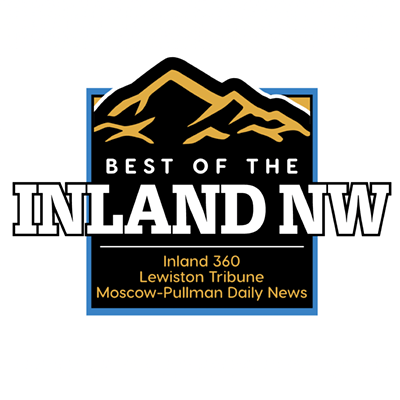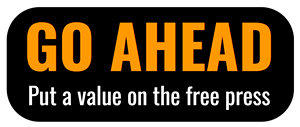
Higher education typically prides itself on its willingness to confront difficult topics in a calm and rational manner, and few topics are more controversial than inequality in America.
Whether it involves racial justice, economic opportunity or health care access, diverse perspectives about inequality have played a major role in much of the social discord that's rolled across the country in recent years.
That's one of the reasons why Washington State University chose “Tales of Two Americas: Stories of Inequality in a Divided Nation” as this year's Common Reading Program book.
“The interest in this book stems partly from … the awareness that the past year has revealed more starkly many kinds of inequalities and divisions that have long been present, but haven't always been so sharply seen,” noted the common reading selection committee, in announcing its choice.
Edited by John Freeman, “Tales of Two Americas” is an anthology that includes essays, poems and short stories from 36 contemporary writers.
The authors range from Pulitzer Prize winners Anthony Doerr, of Boise, and Timothy Egan, of Seattle, to a host of regional and perhaps lesser-known authors, such as former U.S. Poet Laureate Juan Felipe Herrera or Kirstin Valdez Quade, a professor of creative writing at Princeton University.
Some of the works are definitely angry in tone, highlighting the casual disdain with which poor Americans and minorities are often treated. Others condemn the patronizing charity offered by institutions that promote diversity, while withholding respect.
For example, in her story “Youth from Every Quarter,” Quade talks about the summer she spent teaching at a New England boarding school that provided no support system to help poorer students succeed.
“It should go without saying that it's not enough for elite institutions to accept students from racially, ethnically and economically diverse backgrounds, if those students are then told in a thousand ways – ways tiny and large, oblique and direct – that they are there only at the whims of the powers that be, that they haven't paid for the privilege to err or falter, that at root they don't belong,” Quade wrote.
In “Death by Gentrification,” Rebecca Solnit investigated the death of Alejandro Nieto, an unarmed, 28-year-old Latino man who was shot 14 times by police while having lunch in the San Francisco neighborhood where he'd been born and raised.
“Nieto died because a series of white men saw him as a menacing intruder in the place he had spent his whole life,” Solnit wrote. “Some of them thought he was a gang member because he was wearing a red jacket.”
“We are a nation that prides itself for its founding principle of equality, yet we are surrounded by ways in which we struggle with that concept. I don't think being aware of that struggle undermines the goal of equality or the sense that it's important. To look at the inequalities that exist around us isn't to say we shouldn't be proud to be Americans. It just points out that there's still work to be done.” - Karen Weathermon, co-director of the WSU Common Reading Program.
tweet this
Many authors, however, simply write about different aspects of American life. There are stories about homelessness, and about having to sell blood plasma to get by. There are poignant memories of growing up poor and fighting to escape dead-end lives.
The book offers few solutions to the problem of inequality. Instead, it simply bears witness to realities that many of us turn from, with an unspoken “What are you going to do about it?” hovering in the background.
Given the broad nature of its subject matter, Karen Weathermon, WSU's director of first-year programs, said “Tales of Two Americas” has nearly unlimited potential to prompt discussions in classes and on campus.
“You can look almost anywhere across the university and find someone whose research ties in to inequality,” she said. “And it's hard to find a student who isn't passionately interested in at least some aspect of inequality.”
Weathermon hopes to tap into that diversity with a variety of lectures and events.
For example, she expects to have a faculty member talk about how computer algorithms can emphasize or reinforce inequalities in ways that are invisible to consumers.
Other possible topics include environmental justice and how scarce resources are allocated in a changing world, urban planning and homelessness, broadband access and educational opportunities, and healthcare disparities and the social determinants of health.
A rolling calendar of lectures, exhibits and events related to the common reading book can be found on the Common Reading Program website, commonreading.wsu.edu.
“I'm trying to reach as widely across the campus as I can,” Weathermon said.
Given its subject matter, Weathermon suspects it wouldn't have been possible to choose “Tales of Two Americas” as a common reading book across the border in Idaho, where lawmakers this year spent much of their time bemoaning “critical race theory” and efforts by higher education institutes to “indoctrinate” impressionable students.
Nevertheless, she thinks students – and society – are better off when higher education does confront these difficult issues.
“We are a nation that prides itself for its founding principle of equality, yet we are surrounded by ways in which we struggle with that concept,” she said. “I don't think being aware of that struggle undermines the goal of equality or the sense that it's important. To look at the inequalities that exist around us isn't to say we shouldn't be proud to be Americans. It just points out that there's still work to be done.”
The great benefit of the Common Reading Program, Weathermon said, is that “it's a way to help students encounter ideas and perspectives they wouldn't otherwise encounter.”
RELATED EVENTS
Casey Bartrem on “Making “Green” Energy “Clean” Energy: The Minerals that Will Power the Low-Carbon Future”
4:30 p.m. Monday, Sept. 13, online talk on Zoom, (link below).
The fight against climate change requires a shift to low-carbon technologies, but these alternative energy sources are not completely green, clean or renewable. In addition, many of the minerals needed to power climate-friendly initiatives are linked to violent conflict, child labor and severe environmental and public health impacts for the communities where mines are located. Recent proposals for mining development in the Pacific Northwest bring the trade-offs of low-carbon energy closer to home, especially to tribal lands where many of these minerals are located. Bartrem is the executive director of Terregraphics International Foundation, a Moscow-based nonprofit that works to address disparities in environmental health.
Museum Exhibits: Black Lives Matter Artist Grant Exhibition and “Mirror, Mirror: The Prints of Alison Saar”
Through Dec. 18, Jordan Schnitzer Museum of Art, WSU, Pullman.
Both exhibits illuminate aspects of inequality. In December 2020, the museum launched a grant program to fund new artwork that responds to the Black Lives Matter movement and systemic racism. The Black Lives Matter Artist Grant Exhibition features the work of the 20 artists selected to receive the $2,500 grants. The Alison Saar exhibit, “Mirror, Mirror,” features prints and sculptures by Saar, whose work is informed by history, race and mythology.





















